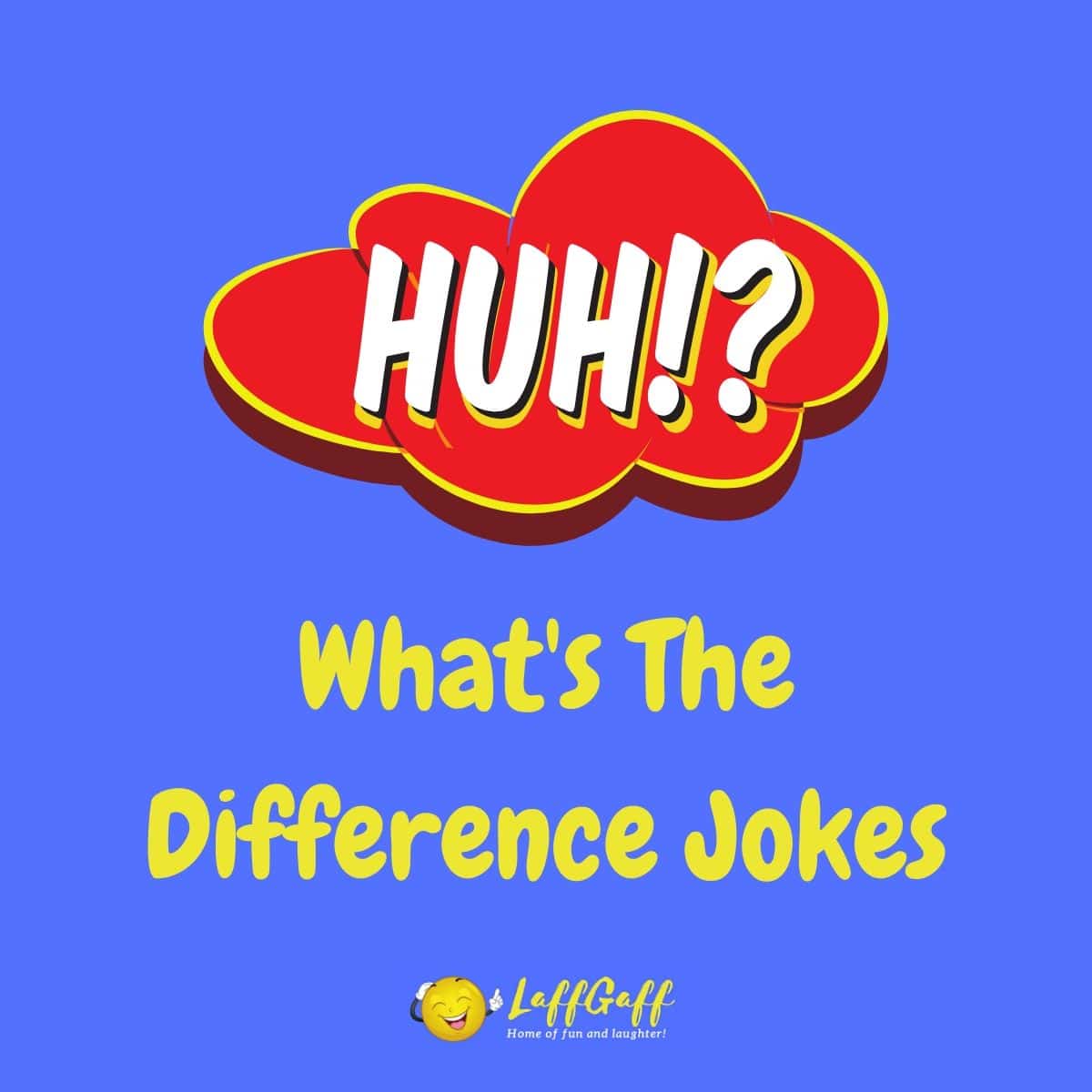What Is The Difference Between Jokes?
Understanding the difference between jokes is essential for navigating social interactions and humor effectively. Jokes come in various forms and styles, each eliciting laughter in unique ways. This article will delve into the intricacies of jokes, exploring their types, components, and cultural significance. By understanding these differences, you can enhance your comedic repertoire and appreciate humor on a deeper level.
In today's world, humor plays a vital role in communication, helping to build connections and ease tensions. However, not all jokes are created equal. Some rely on wordplay, while others depend on observational humor or situational contexts. This article aims to clarify these distinctions, providing insights into the mechanics of humor and how different styles resonate with diverse audiences.
Throughout this article, we will examine various joke types, their structures, and the psychological effects they have on listeners. By the end, you will have a clearer understanding of what makes a joke effective and how to choose the right type for any occasion.
Table of Contents
- What are Jokes?
- Types of Jokes
- Components of a Joke
- Cultural Significance of Jokes
- Psychological Effects of Jokes
- How to Tell a Good Joke
- Common Mistakes in Joking
- Conclusion
What are Jokes?
Jokes are a form of communication that aims to provoke laughter or amusement. They usually consist of a setup and a punchline, with the punchline delivering the unexpected twist that leads to humor. Jokes can be found in various settings, from casual conversations to professional performances.
Types of Jokes
Jokes can be categorized into several distinct types. Here are some common ones:
- Puns: Wordplay that exploits multiple meanings of a term or similar-sounding words.
- Knock-Knock Jokes: Classic format involving a call-and-response structure.
- One-Liners: Short, concise jokes that deliver a punchline quickly.
- Observational Humor: Jokes that draw on everyday life experiences.
- Dark Humor: Jokes that find comedy in serious or taboo subjects.
Examples of Different Types of Jokes
- Pun: "Time flies like an arrow; fruit flies like a banana."
- Knock-Knock: "Knock, knock. Who’s there? Lettuce. Lettuce who? Lettuce in, it’s freezing out here!"
- One-Liner: "I told my wife she was drawing her eyebrows too high. She looked surprised."
- Observational Humor: "Have you ever noticed that when you lose your remote, you suddenly find it in the last place you look?"
- Dark Humor: "I have a joke about death, but it’s a bit of a killer."
Components of a Joke
Every joke comprises several essential components:
- Setup: The initial part that creates context and builds anticipation.
- Punchline: The unexpected twist or conclusion that elicits laughter.
- Timing: The delivery speed and pauses that enhance the joke's impact.
- Audience: The listeners' background and preferences significantly affect humor reception.
Cultural Significance of Jokes
Jokes often reflect cultural norms and values, making them a crucial part of social interactions. They can serve various purposes, such as:
- Breaking the ice in social settings.
- Expressing dissent or criticism in a lighthearted manner.
- Creating bonds among groups through shared humor.
Understanding cultural nuances in humor can help avoid miscommunication and foster connections across different backgrounds.
Psychological Effects of Jokes
Humor has profound psychological effects on individuals, including:
- Reducing stress and promoting relaxation.
- Enhancing mood and fostering positive emotions.
- Improving social relationships and communication.
Studies have shown that laughter triggers the release of endorphins, which can contribute to overall well-being.
How to Tell a Good Joke
To tell a good joke, consider the following tips:
- Know your audience and tailor your humor accordingly.
- Practice your timing and delivery for maximum impact.
- Use body language and facial expressions to enhance the joke.
- Be mindful of sensitive topics and avoid offensive humor.
Common Mistakes in Joking
Here are some common pitfalls to avoid when telling jokes:
- Over-explaining the joke, which can diminish its punch.
- Using outdated or overused jokes that may not resonate.
- Ignoring the audience's reactions and failing to adapt.
Conclusion
In conclusion, understanding the differences between jokes is critical for effective communication and social interaction. By recognizing various types of jokes, their components, and cultural significance, you can enhance your humor and connect with others more meaningfully. Remember to adapt your jokes to your audience and practice good timing for the best results. Feel free to leave a comment below, share this article, or explore more on our site!
Thank you for reading, and we hope to see you back soon for more insightful articles!
Exploring The Life And Career Of Lenny Kravitz
What Happened To Kaitlan Collins' Mother? A Deep Dive Into Her Life And Legacy
Exploring The Legacy Of Family Feud Hosts: A Comprehensive Overview


